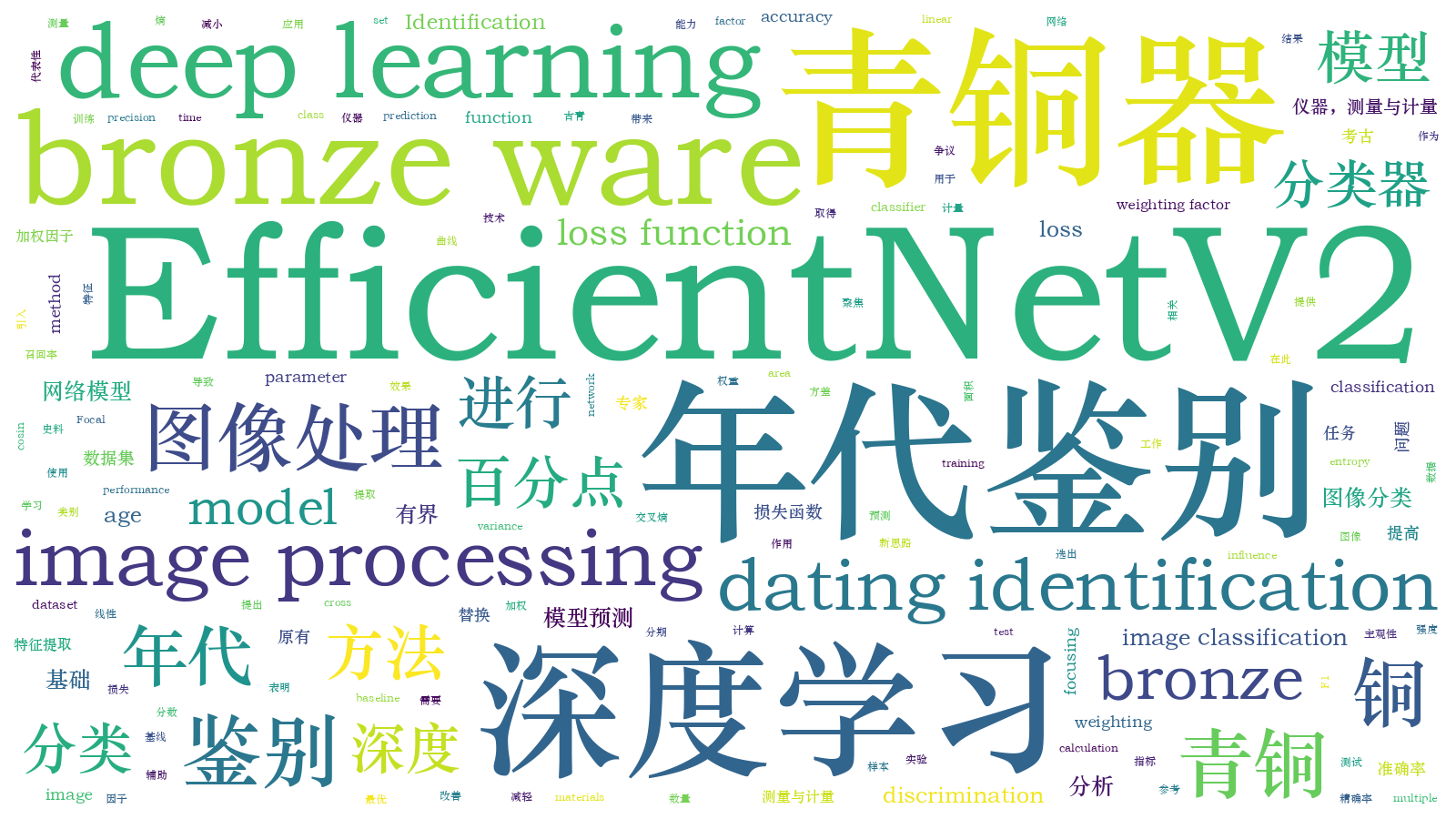激光与光电子学进展, 2024, 61 (8): 0812003, 网络出版: 2024-03-15
基于有界分类器的深度学习青铜器年代鉴别方法
Bronze Dating Identification Method Based on Bounded Classifiers in Deep Learning
图像处理 深度学习 青铜器 EfficientNetV2 年代鉴别 image processing deep learning bronze ware EfficientNetV2 dating identification
摘要
针对古青铜器年代鉴别任务需要大量的相关史料、鉴别耗时长以及主观性强等问题,提出一种新思路用于辅助考古专家对古青铜器进行分析和年代鉴别。所提方法在图像分类预训练权重的基础上应用深度学习方法对古青铜器进行年代鉴别:首先,通过大量的基础实验,在较为有代表性的4种网络模型中选出鉴别结果较好的EfficientNetV2-L作为基线模型;接下来,使用EfficientNetV2-L对古青铜器数据集进行特征提取;然后,将原有的线性分类层替换为cosin_classifier,减小方差带来的风险,提高模型鉴别能力;最后,引入Focal损失函数替换原有的交叉熵损失函数进行损失计算,在聚焦因子(focusing parameter)和加权因子(class weighting)作用下有效地改善样本数量较少类别所导致的模型学习效果较差的问题。所提方法较原始EfficientNetV2-L在准确率、精确率、召回率、F1分数和曲线下面积等指标上提高4.1百分点、4.0百分点、4.1百分点、4.2百分点和0.9百分点,在测试集上取得91.7%的最优准确率。在此基础上,还对分期有争议的青铜器进行了模型预测分析。结果表明,深度学习技术在古青铜器数据集年代鉴别任务上是有效的,可提供参考分析数据,减轻考古专家的工作强度。
Abstract
Identifying the age of ancient bronze vessels requires many relevant historical materials, takes a long time, and has strong subjectivity. We propose a new approach to assist archaeologists in analyzing and dating ancient bronze artifacts. The proposed method applies deep learning methods for age discrimination of ancient bronze artifacts based on image classification pre training weights. First, through multiple basic experiments, EfficientNetV2-L with good discrimination results is selected as the baseline model from four representative network models. Thereafter, EfficientNetV2-L is used to extract features from the ancient bronze ware dataset, and then, the original linear classification layer is replaced with cosin_classifier to reduce the risk caused by variance and improve the model's discrimination ability. Finally, the focal loss function is introduced to replace the original cross entropy loss function for loss calculation. Under the influence of the focusing parameter and class weighting factor, the poor model learning performance caused by a small number of samples and categories is effectively reduced. The proposed method improves the accuracy, precision, recall, F1 score, and area under the curve by 4.1 percentage points, 4.0 percentage points, 4.1 percentage points, 4.2 percentage points, and 0.9 percentage points, respectively, compared to the original EfficientNetV2-L, achieving an optimal accuracy of 91.7% on the test set. Additionally, a model prediction analysis is conducted on controversial bronze artifacts with different stages. The results indicate that deep learning technology is effective in identifying the age of ancient bronze ware datasets, providing reference analysis data and reducing the workload of archaeological experts.
李佰强, 潘光绪, 李天倩, 朱冬, 白露, 阳小明, 刘培刚, 文坤强. 基于有界分类器的深度学习青铜器年代鉴别方法[J]. 激光与光电子学进展, 2024, 61(8): 0812003. Baiqiang Li, Guangxu Pan, Tianqian Li, Dong Zhu, Lu Bai, Xiaoming Yang, Peigang Liu, Kunqiang Wen. Bronze Dating Identification Method Based on Bounded Classifiers in Deep Learning[J]. Laser & Optoelectronics Progress, 2024, 61(8): 0812003.







